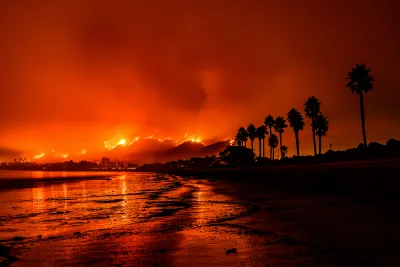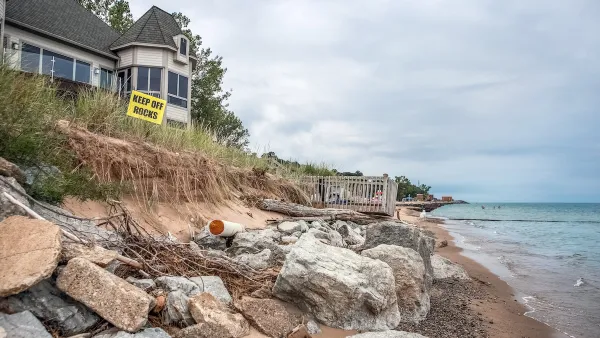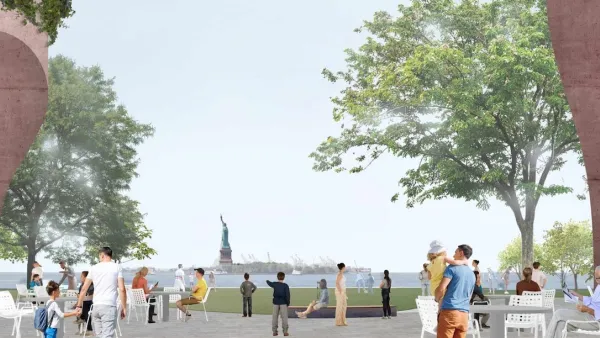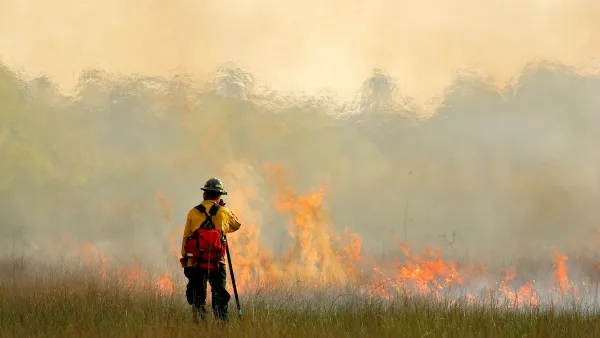Cities around the world are finding ways to protect their residents and infrastructure from the impacts of extreme weather and natural disasters.

In an article for Architecture Daily, Maria-Cristina Florian describes how cities around the world are responding to and preparing for three major types of extreme climate events: flooding, wildfires, and earthquakes.
Florian provides examples of resiliency initiatives from cities facing a variety of threats. In the case of flooding, “Architects and urban planners are now exploring alternatives that rethink stormwater as a resource rather than a hazard, incorporating it into the ecosystem of the city.”
When it comes to wildfires, cities can use mapping to understand high-risk areas. “As peripheric neighborhoods usually have a lower density, they create the ‘wildland-urban interface’ (WUI), an intermediary space typically containing fire fuel, dry material such as fallen leaves. These areas can benefit from the planting of fire-resistant vegetation like low-growing high-moisture plants and hardwood trees with low sap or rising content.” Mitigation strategies also include prescribed burns and building codes that ensure fires are less likely to catch and spread.
To build resilience against earthquakes, “In the areas more prone to seismic activity, structural solutions such as retrofitting with eccentrically braced steel frames, or EBFs, can improve a building’s seismic resilience.”
Florian adds a fourth category: disaster response. “Architects have a role to play, especially in offering fast, efficient, and comfortable solutions for emergency accommodation.” Urban design and architecture can have an effect on how quickly and effectively emergency services can be provided and reached.
FULL STORY: How Can Cities Create Resilience in the Face of Natural Disasters

National Parks Layoffs Will Cause Communities to Lose Billions
Thousands of essential park workers were laid off this week, just before the busy spring break season.

Retro-silient?: America’s First “Eco-burb,” The Woodlands Turns 50
A master-planned community north of Houston offers lessons on green infrastructure and resilient design, but falls short of its founder’s lofty affordability and walkability goals.

Delivering for America Plan Will Downgrade Mail Service in at Least 49.5 Percent of Zip Codes
Republican and Democrat lawmakers criticize the plan for its disproportionate negative impact on rural communities.

Test News Post 1
This is a summary

Test News Headline 46
Test for the image on the front page.

Balancing Bombs and Butterflies: How the National Guard Protects a Rare Species
The National Guard at Fort Indiantown Gap uses GIS technology and land management strategies to balance military training with conservation efforts, ensuring the survival of the rare eastern regal fritillary butterfly.
Urban Design for Planners 1: Software Tools
This six-course series explores essential urban design concepts using open source software and equips planners with the tools they need to participate fully in the urban design process.
Planning for Universal Design
Learn the tools for implementing Universal Design in planning regulations.
EMC Planning Group, Inc.
Planetizen
Planetizen
Mpact (formerly Rail~Volution)
Great Falls Development Authority, Inc.
HUDs Office of Policy Development and Research
NYU Wagner Graduate School of Public Service





























